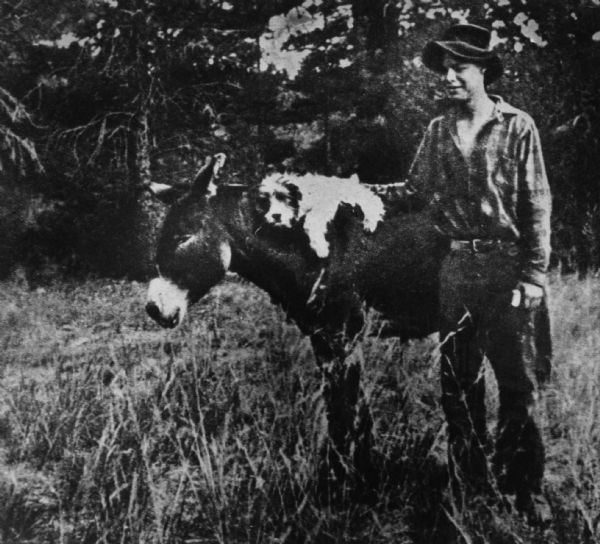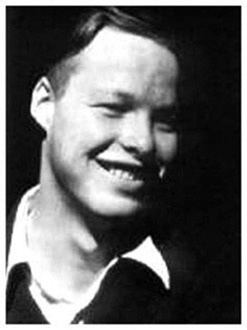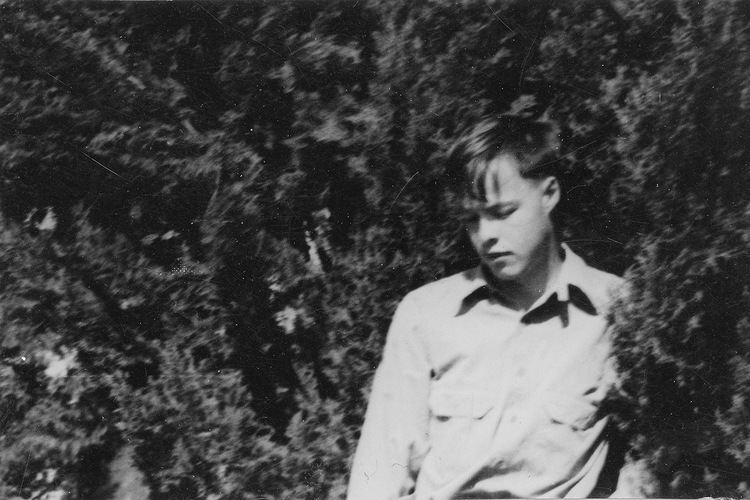Name Everett Ruess Role Artist | Died 1934, Utah, United States | |
 | ||
Born March 28, 1914 ( 1914-03-28 ) Oakland, California Occupation printmaker, artist, writer Parent(s) Christopher Ruess and Stella Knight Ruess People also search for Carl McCunn, Christopher McCandless, Nancy Wilcox, Susan Curtis, Malik Smith | ||
Everett ruess live dana and susan robinson
Everett Ruess (March 28, 1914 – c. November 1934) was a young American artist, poet, and writer known for his solo explorations of the High Sierra, the California coast, and the deserts of the American Southwest and his ultimate disappearance while traveling through a remote area of Utah. His fate remains a mystery to this day.
Contents
- Everett ruess live dana and susan robinson
- Dave Alvin Everett Ruess
- Early life
- Travels
- Disappearance
- Works
- In popular culture
- Quotations
- References

In 2009, DNA from human remains found in Utah were initially linked to Ruess, but the findings were soon challenged and shown conclusively to actually be the remains of an American Indian. The 2009 find did not resolve the Ruess mystery but rather fueled popular interest in his story.

Dave Alvin - "Everett Ruess"
Early life
Ruess was the younger of two sons of Stella and Christopher Ruess. Christopher was a Unitarian minister whose work caused the family to move every few years. Everett's older brother, Waldo, was born on September 5, 1909. A precocious child, Everett Ruess began woodcarving, modeling in clay, and sketching at an early age. At 12, he was writing essays and verse, and began a literary diary that eventually grew into volumes, with pages telling of his travels, thoughts, and works. By 1920, the Ruess family was living in Brookline, Massachusetts, and by 1930, they were living at 836 North Kingsley Drive in Los Angeles. Ruess took a creative writing class at Los Angeles High School and later won a poetry award at Valparaiso High School, in Indiana. At Hollywood High School he served as the Secretary-Treasurer of the Tabard Folk, the school's literary club. That year, he published an original poem in the yearbook, entitled "Lonesome." In 1931, he served as vice-president of the school's Civic Club.
Travels

Starting in 1931, Ruess traveled by horse and burro through Arizona, New Mexico, Utah, and Colorado, exploring the high desert of the Colorado Plateau. He rode broncos, branded calves, and investigated cliff dwellings, trading his prints and watercolors to pay his way. He explored Sequoia and Yosemite National Parks and the High Sierra in the summers of 1930 and 1933. In 1934, he worked with University of California archaeologists near Kayenta, took part in a Hopi religious ceremony, and learned to speak Navajo.
Disappearance
On November 20, 1934, Ruess set out alone into the Utah desert, taking two burros as pack animals. He was never seen again. The only sign of him was a corral he had made at his campsite (37°17′53.72″N 110°57′4.77″W) in Davis Gulch, a canyon of the Escalante River. Some think he may have fallen off a cliff or drowned in a flash flood; others suspected he had been murdered. An unlikely story is that he crossed the Colorado River to the Navajo Reservation, married a Navajo woman, and lived there in secrecy the rest of his life. His mysterious disappearance turned him into a folk hero.
Other than Native Americans, Mormon pioneers, and local cowboys, Ruess was one of the first "outsiders" to venture so deeply and completely into what was then largely an unknown wilderness.
The discovery of a grave site on Comb Ridge, near the town of Bluff, Utah, added to the mystery. An elderly Navajo claimed that Ruess was murdered by two Ute Indians who wanted his burros. Bones and teeth found in the grave allegedly matched Ruess' race, age, size, and facial features. In April 2009, comparison of DNA from the remains and that of Everett's nieces and nephew, and comparison of the skull to photographs, seemed to confirm that the remains were those of Ruess. Two months later, however, Kevin Jones, state archaeologist of Utah, advised the remains probably were not Ruess', since dental records from the 1930s do not match those in published photographs of the body.
On October 21, 2009, the Associated Press reported that DNA tests conducted by the Armed Forces Institute of Pathology show the remains are not those of Ruess. Instead, they probably belong to a Native American. A later article in National Geographic Adventure Magazine identified problems in the DNA matching software as the source of the error.
Works
Ruess was known for making linoleum prints of landscapes and nature, and was associated with Ansel Adams and Dorothea Lange. His prints show scenes from the Monterey Bay coast, the northern California coast near Tomales Bay, the Sierra Nevada, Utah, and Arizona.
Ruess wrote no books during his life, but he was a lifelong diarist and he sent home hundreds of letters. His journals and poetry were posthumously published in two books, both illustrated with his own woodcuts:
His story, along with that of Christopher McCandless, was retold more briefly in Jon Krakauer's 1996 book Into the Wild. Ruess is also mentioned in Edward Abbey's 1968 book Desert Solitaire.
Everett's last letter to his brother, Waldo, said:
... as to when I revisit civilization, it will not be soon. I have not tired of the wilderness... It is enough that I am surrounded with beauty... This had been a full, rich year. I have left no strange or delightful thing undone I wanted to do.
